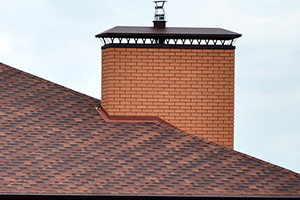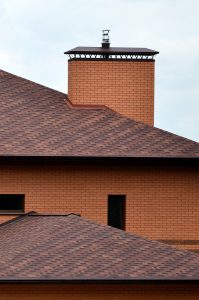


Early Roofing Materials
Clay tiles, wood tiles, and slate dominated the roofing industry until the mid-19th century, when bituminous and metal roofing systems hit the scene, making low-slope applications a reality. Roofing in the 20th century saw numerous improvements, with several new materials developed for both low-sloped and steep-sloped roofs. Asphalt shingles emerged as the top roofing material for houses but weren’t a common option for commercial buildings, which tended to be flat. While asphalt shingles continued to grow in popularity largely due to their being budget-friendly and fire-resistant, the development of roof-related components like flashing, gutters, and downspouts was a boon for the roofing industry.
Appearance Of Built-Up Roofing
Built-up roofing (BUR) systems are made by alternating layers of asphalt-impregnated fabric and bituminous coatings. Due to this redundancy, if one layer breaks down, another takes its place, making it stronger than other products on the market. The history of commercial roofing lists Samuel and Cyrus Warren as pioneers in the industry who revolutionized the BUR roofing process by using coal tar as an adhesive for the layers. In 1868, Michael Ehret patented the slag roofing system, with slag used as the top coating. The development of built-up roofing changed the shape of commercial buildings, especially in temperate regions where steep-sloped roofs weren’t necessary for rain protection. The result was the introduction of flat roofs, which are now predominant in commercial buildings.
History Of EPDM Roofing
The roofing industry underwent several dramatic changes over the last 40 years, including the introduction of EPDM. Introduced in the early 1960s, EPDM was made of an elastomeric polymer synthesized from ethylene, propylene, and a small amount of diene monomer. Flexible EPDM membranes are installed through fully adhered or mechanically fastened systems. EPDM roofing has endured as a leading product in the roofing market with its success due in large part to numerous material, design, and application benefits.
- Material benefits include the ability to retain their physical characteristics due to its highly flexible and pliable nature. These characteristics allow EPDM to conform to a building’s structural movement and overcome thermal stresses from hot and cold temperatures.
- Design benefits stem from the ability to be mechanically attached with screws and attachment strips or fully adhered to an appropriate structural deck or rigid insulation board. Both installation types eliminate the weight found in other systems. However, mechanical fastening is often preferred for ease of installation and an attractive, smooth finish.
- Application benefits of EPDM over hot tar or asphalt built-up roofing systems include a cleaner, cooler application and a product that’s easier to handle. These systems also offer low cost, low maintenance, and easy repair options. When the peel-and-stick application was introduced, installation became even easier. With so many application methods, EPDM systems are ideal for nearly any roof shape, height, or slope.
History Of TPO Roofing
The chemical company Dow invented TPO roofing in the early 1990s. TPO, or thermoplastic olefin roofing, includes membranes made from ethylene propylene rubber. They include a combination of rubber and hot-air welded seams and are often touted as seamless. TPO roofs are environmentally friendly, resist ozone and algae, and are safe to install. They resist impacts, punctures, and tears due to high flexibility that allows for building movement.
TPO roofing is fully adhered, which means the membrane is attached to the substrate material with adhesive for a strong bond. TPO material reflects heat and resists fire, UV rays, and dirt, making it a popular option even though it’s higher priced than EPDM roofing. Popularity also stems from the green movement, because TPO is recyclable for roofing materials or burned as fuel.
Single-ply, reinforced TPO sheets have been widely used to cover industrial and commercial flat roofs. TPO continues to evolve with the objective of creating a new, improved single-ply, heat-seamable sheet with increased low-temperature flexibility and heat seam peel strength.
Our Lengthy Commercial Roofing History
Modern roofing has come a long way, and McDonald & Wetle is proud to say we’ve kept pace with changes in roofing materials and the latest technology and trends. Commercial building owners have many more choices than their predecessors, but the type of roofing material used is still influenced by availability of materials, local climate, and personal preferences. Contact us in Seattle, Washington, at 253-589-8999 or in Portland, OR, at 503-667-0175 to learn more about our comprehensive roofing solutions today.
